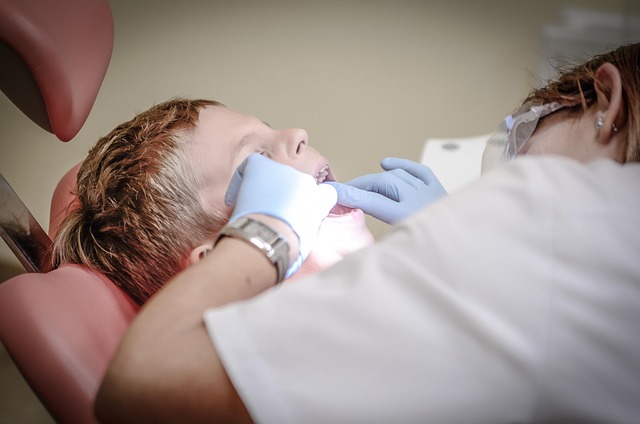General liability for medical practices is a critical component of risk management in healthcare, safeguarding clinics from potential lawsuits and financial exposure related to medical malpractice, property damage, and personal injuries. Adequate coverage enables providers to prioritize patient care without legal anxiety, ensuring clinic stability and continuity. Best practices involve regular protocol reviews, staff training, safety maintenance, and detailed record-keeping, fostering a culture of safety and enhancing patient satisfaction. Meeting stringent regulations and implementing robust risk management strategies are essential to mitigate general liability claims and protect patient well-being.
In today’s healthcare landscape, ensuring everyday protection for medical clinics is paramount. General liability insurance for medical practices acts as a crucial shield against potential risks and lawsuits. This article delves into essential coverage areas, risk management strategies, daily operational safety best practices, legal obligations, and the enhanced patient experience through comprehensive protection. Understanding general liability for medical practices is a vital step in safeguarding your clinic’s future.
- Understanding General Liability Insurance for Medical Practices
- Essential Coverage Areas for Clinic Protection
- Assessing Risk Management Strategies in Healthcare
- Best Practices for Daily Operational Safety
- Legal Obligations and Their Impact on Clinic Operations
- Enhancing Patient Experience Through Comprehensive Protection
Understanding General Liability Insurance for Medical Practices

General Liability Insurance for Medical Practices is a crucial safety net designed to protect clinics and their professionals from potential risks and lawsuits. This type of insurance covers a wide range of incidents that may occur in a medical setting, from accidents or injuries to patients to property damage. It’s not just about financial protection; it’s also about peace of mind, ensuring that healthcare providers can focus on patient care without the constant worry of legal repercussions.
The coverage typically includes medical malpractice, personal and advertising injury, and property damage. For instance, if a patient sues due to a misdiagnosis or treatment error, general liability insurance helps cover legal fees and potential damages. Similarly, it protects against claims related to slip-and-fall accidents on the clinic’s premises or even issues arising from advertising mishaps. Understanding and securing adequate General Liability Insurance for Medical Practices is essential for ensuring continuity and stability in healthcare operations.
Essential Coverage Areas for Clinic Protection

In ensuring the smooth operation and longevity of a medical clinic, comprehensive protection is paramount. Among various coverage areas, general liability for medical practices stands as a cornerstone. This type of insurance safeguards clinics against potential claims arising from patient injuries or other liabilities not directly tied to clinical services, such as property damage or personal injury caused by premises conditions.
Specifics within general liability for medical practices include coverage for slip and fall incidents, legal costs associated with defense against claims, and settlement payments when necessary. By securing adequate general liability insurance, medical clinics can mitigate risks, protect their financial health, and maintain a focus on patient care and treatment—the primary goal of healthcare delivery.
Assessing Risk Management Strategies in Healthcare

Effective risk management is a cornerstone of any successful medical clinic, and assessing these strategies is vital in today’s healthcare landscape. General liability for medical practices is a key consideration, as it shields clinics from potential claims related to patient injuries or other liabilities. By thoroughly evaluating risks, clinics can implement tailored measures to mitigate these concerns.
This process involves identifying hazards specific to the clinic’s operations, such as slip-and-fall accidents, medical errors, or equipment malfunctions. Once identified, strategies like regular facility maintenance, employee training, and safety protocols can significantly reduce potential risks. Regular reviews and updates to these plans ensure the clinic stays prepared for an ever-evolving healthcare environment.
Best Practices for Daily Operational Safety

To ensure everyday protection and safety in medical clinics, establishing robust best practices is paramount. Daily operational safety involves a multifaceted approach to safeguard patients, staff, and the clinic itself from potential risks. A crucial aspect is implementing comprehensive general liability for medical practices, which acts as a shield against unforeseen incidents that may lead to legal repercussions. This includes regularly reviewing and updating safety protocols, ensuring all staff are trained in emergency response procedures, and maintaining a clean, organized environment to minimize trip hazards and improve accessibility.
Additionally, keeping detailed records of all safety measures and incident reports is essential for compliance and risk management. Regular equipment maintenance checks and up-to-date first aid kits are integral parts of these practices. By adhering to these protocols, medical clinics can foster a culture of safety, enhancing patient satisfaction and well-being while mitigating potential legal liabilities related to general liability for medical practices.
Legal Obligations and Their Impact on Clinic Operations

Medical clinics operate within a tightly regulated environment, with various legal obligations designed to protect patients and ensure quality care. General liability for medical practices is a cornerstone of this regulatory framework. It mandates that healthcare providers take reasonable steps to prevent patient harm during their visits. This includes maintaining a safe clinic environment, ensuring proper sanitation, and adhering to standard operating procedures to minimize risks.
Failure to meet these legal obligations can have significant implications for clinic operations. Incidents of medical malpractice, property damage, or personal injuries sustained on the premises can lead to lawsuits, financial settlements, and damaged reputations. To mitigate these risks, clinics must implement robust risk management strategies, stay updated with industry standards, and regularly review their insurance coverage to ensure adequate protection against general liability claims.
Enhancing Patient Experience Through Comprehensive Protection

Medical clinics, in their day-to-day operations, prioritize patient safety and satisfaction. Enhancing the patient experience goes beyond exceptional healthcare services; it involves creating an environment that instills trust and confidence. Comprehensive protection plays a pivotal role in achieving this goal. By implementing robust general liability for medical practices, clinics can mitigate risks associated with accidents, injuries, or malpractice, ensuring a secure space for both patients and staff.
This protection extends beyond legal obligations, significantly contributing to patient comfort and peace of mind. A well-protected clinic is better equipped to handle unforeseen circumstances, allowing healthcare professionals to focus on delivering quality care without the added burden of uncertainty. As such, it fosters a positive atmosphere, encouraging open communication and building stronger patient-provider relationships.
